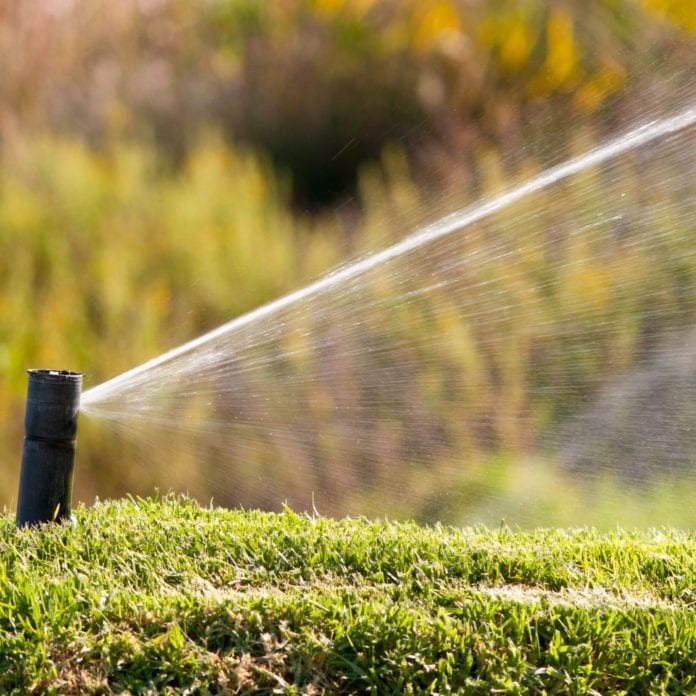Landscape irrigation, a wasteful endeavor
For decades, landscape irrigation in homes and commercial properties has been controlled by timers or manual valves without the ability to regulate how much water is being used. This has led irrigation to become the most wasteful method in urban water use. Hydropoint, a company specializing in smart water management solutions, is working to get rid of the waste produced by manual irrigation systems. It developed the WeatherTrak, a system that analyzes multiple atmospheric and geological factors to pinpoint water needs. The company’s solution requires a way to transmit metrics to thousands of irrigation controllers and valves, which prompted the company to partner with AT&T for connectivity.

M2M and an AT&T network
HydroPoint decided to use an “internet of things,” machine-to-machine solution to connect irrigation control points and sensors to its system for analyzing climate and determining water needs. The company chose AT&T to provide the wireless network, customized network access and a self-service management platform to support the data transport requirements.
Each control and sensor has its own SIM card so each can be individually contacted for control and data collection. As a result HydroPoint is said to have saved customers more than 15 billion gallons of water and $137 million in expenses in 2014 alone, according to a case study provided by AT&T.
Low supply, high demand
California’s ongoing drought has brought wildfires, water shortages, usage restrictions and agricultural losses.
“We’re data geeks and we didn’t find any real deep data on water use,” said Chris Spain, co-founder of Hydropoint. “We started HydroPoint Data Systems and began looking at the end-use segment. We were shocked to see where the waste was really occurring. From 40% to 60% of all urban water use goes to outdoor irrigation, and of that anywhere from 30% to 100% is wasted.”

The problem is that most of the 45 million irrigation controllers used across the United States are just not very smart, Spain said. They are timers, and that’s all. “They do a great job keeping time, but that is not really relevant to what the landscape needs.” As a result, water runs into the streets from overly soaked landscapes or sprinklers spray in a rainstorm.
ET come home
Over-watering can hamper plant growth or kill costly plantings. Excess runoff can erode the landscape or flow off site, carrying fertilizer, pesticides and animal waste into the watershed. A broken valve or water line, left undetected, could cause untold harm. But simply turning the irrigation system down or off is no answer, intelligence brought on by connectivity is required.

“We found this gold standard for agriculture called ET – short for evapotranspiration – a four point weather index that calculates how much water has evaporated from the soil and transpired from the plant,” Spain said.
Industry standard ET is calculated using wind, humidity, solar radiation and temperature inputs. Specialized ET weather stations are available, but are too widely spaced to provide the pinpoint, site-specific data HydroPoint was seeking.
“With high-performance computers there’s a way to calculate each of these parameters for every 100 meters or square kilometer of the country,” Spain said.
HydroPoint modified the system, incorporating more than a century of weather history and passing 8 million data points every day through their computers to calculate ET. An independent study showed HydroPoint’s ET site-specific weather calculations over a year period come within 2% of what is available from a $40,000 ET weather station, according to AT&T.
A solution with thousands of SIM cards
HydroPoint required an M2M solution to communicate in real time with thousands of end points. They used miniature computers equipped with circuit boards processors and memory that calculate water needs and control irrigation systems.

HydroPoint chose AT&T to provide the wireless network connecting its control devices to the ET database, as well as the thousands of SIM cards that identify each controller. Discussions with competing carriers had proved unconvincing.
“They say they’re into machine-to-machine, but you can’t fake experience,” Spain said. “What we like about AT&T is they’ve been doing this for a while. The AT&T wireless network is one of the most important links in the whole process.”
HydroPoint uses the AT&T Enterprise On-Demand service delivery platform to track and manage the SIMs, access help desk support, manage the rate plan to balance usage and handle other network management issues
How it all comes together
Projects begin with a detailed mapping of each site, including soil type, plants, terrain and the locations of controllers identified by their SIM card, valves and water meters. These maps provide property managers with information, often for the first time.
“We used to say our system is all about putting the right amount of water at the right place at the right time,” Spain said. “Now it’s about getting the right data to the right person at the right time.”

HydroPoint’s operations can be complex – some manage hundreds or thousands of properties. With HydroPoint they can view and manage their irrigation performance as a whole, by region or state, or narrow their focus to a single factory or store. They can also check the performance of an individual controller, allowing customers to act with better knowledge.
Spain said systems typically pay for themselves in three years, but some sites pay back in as little as three months. Equally important is the claimed almost 62 million kilowatt-hours of energy saved that would otherwise be needed to move and treat water, according to HydroPoint.

